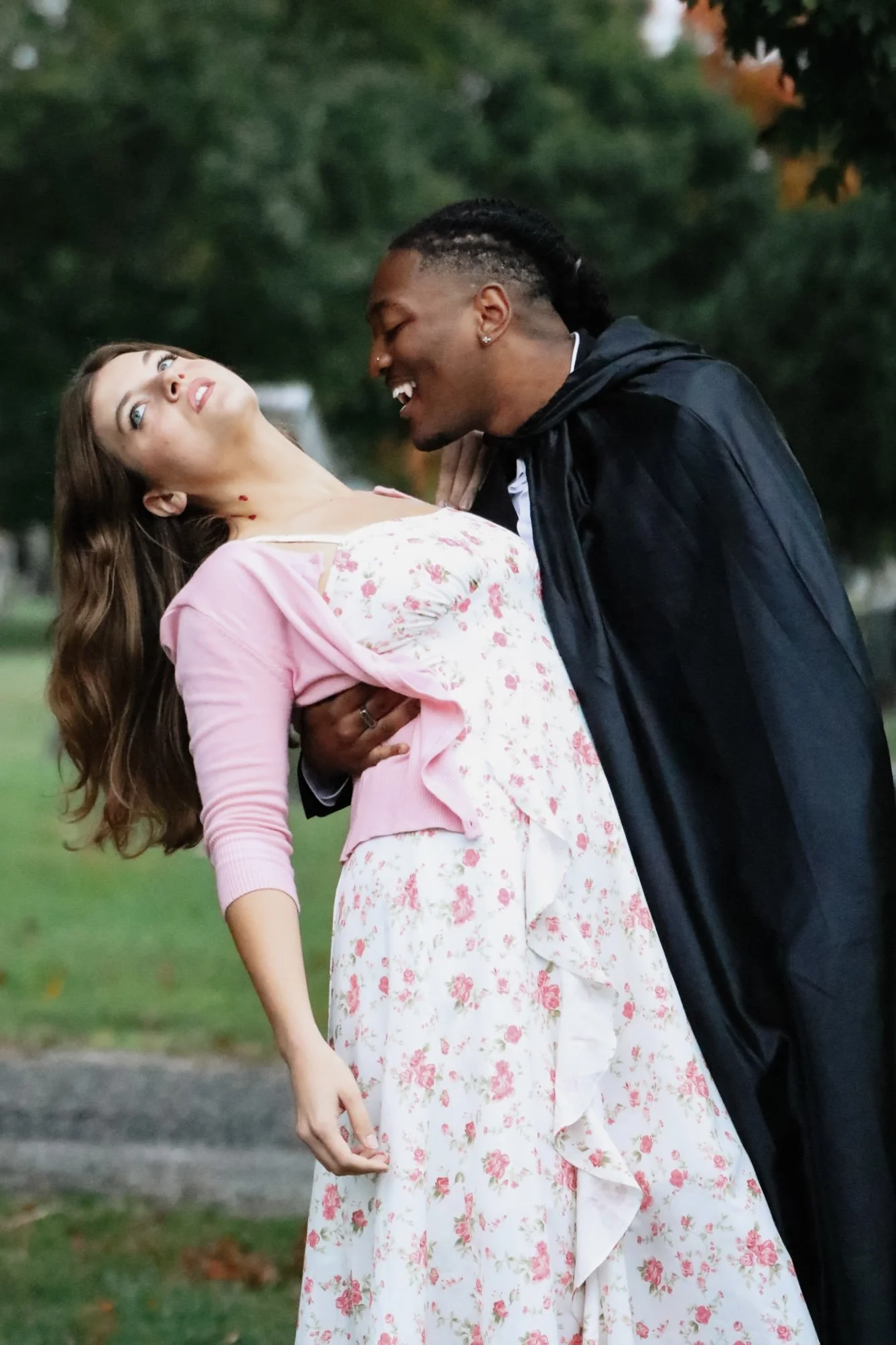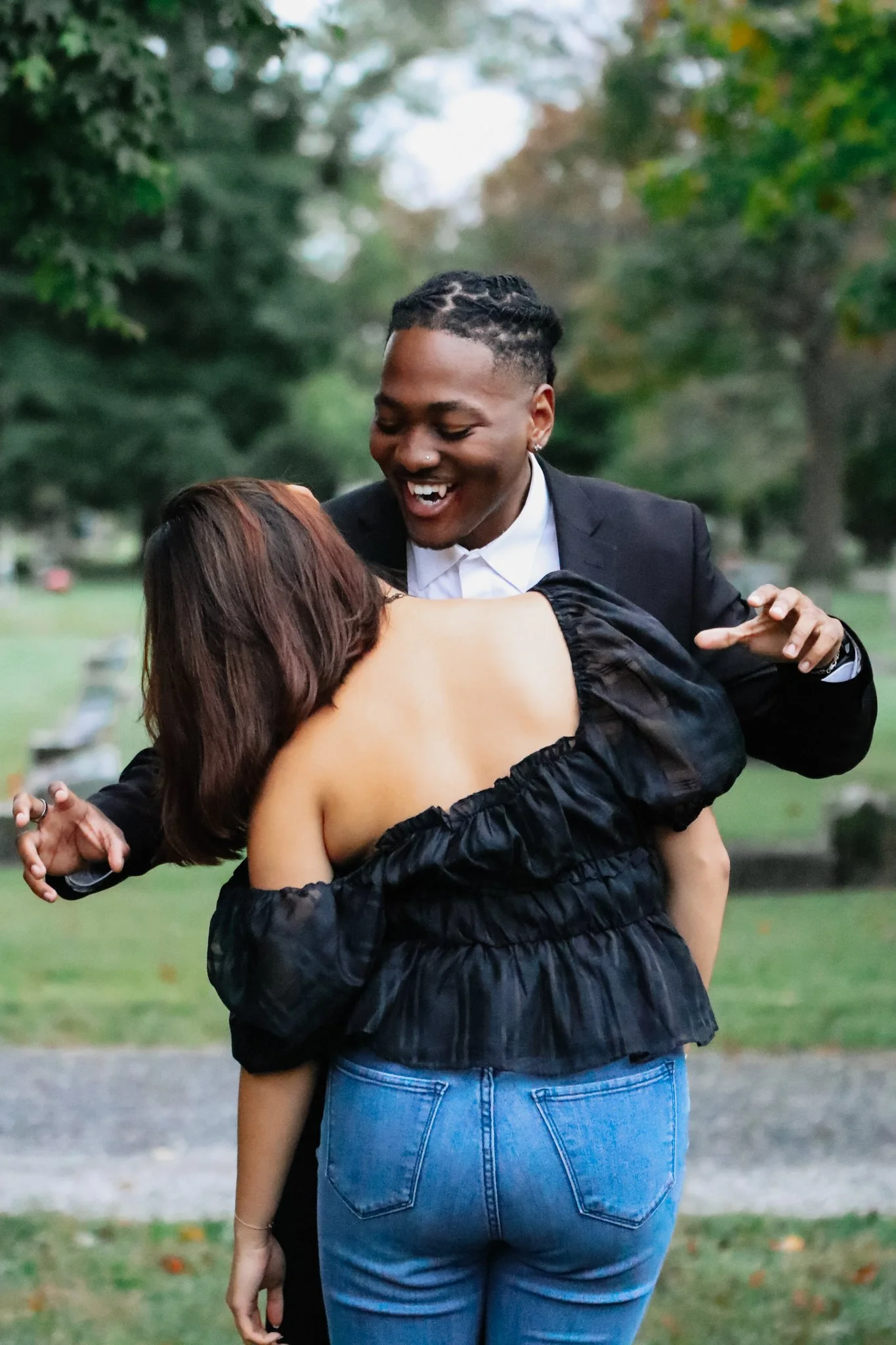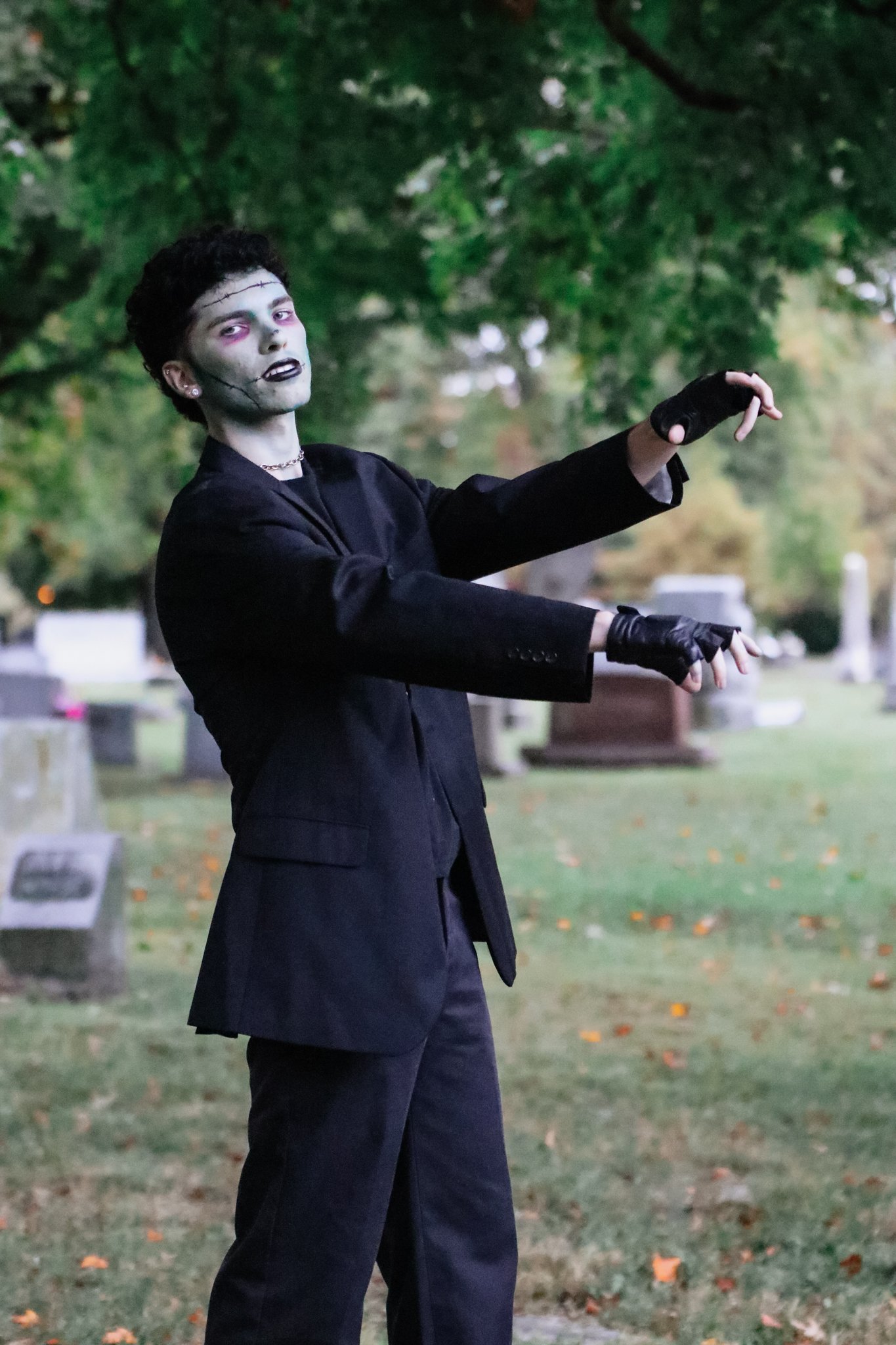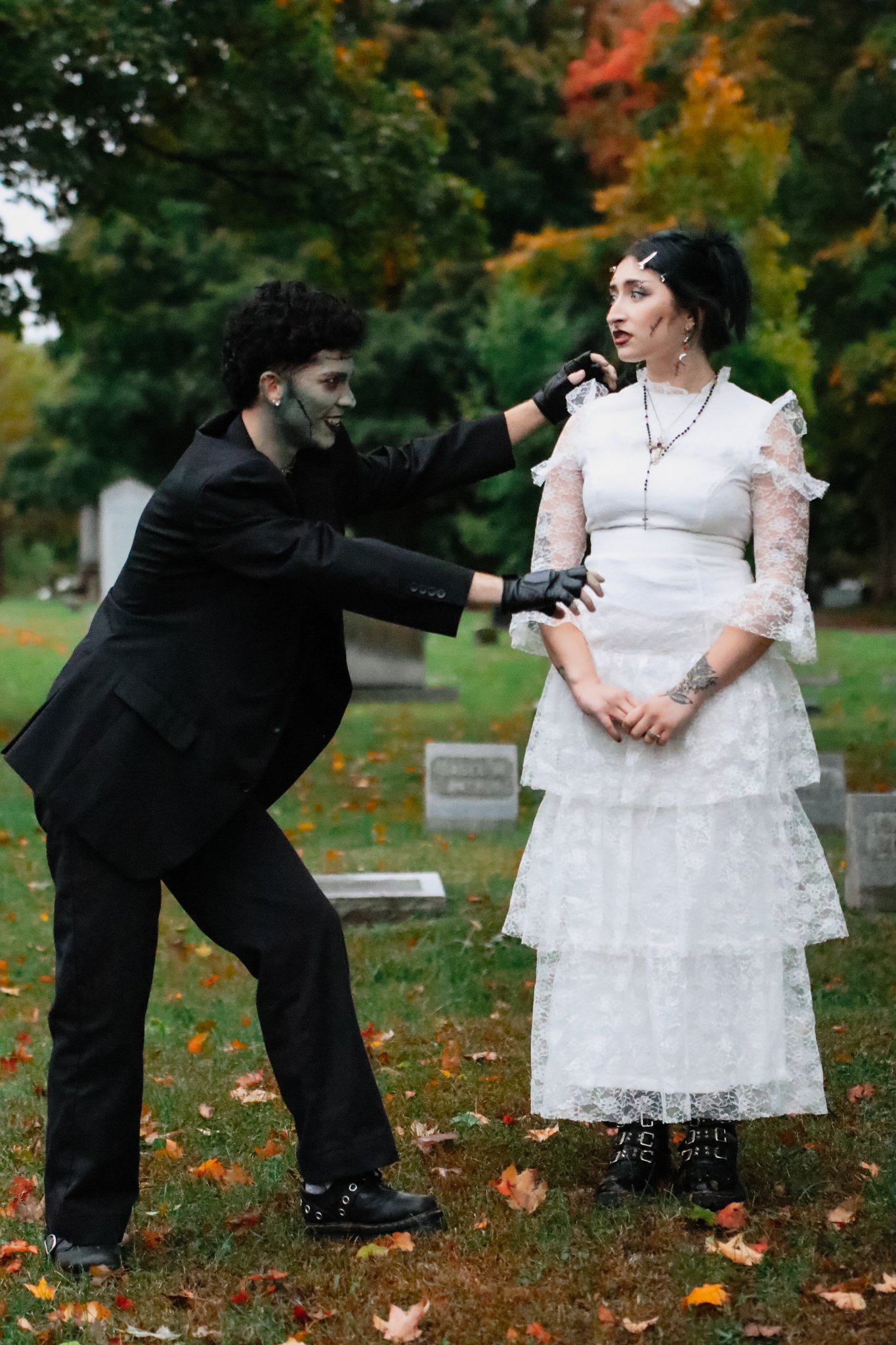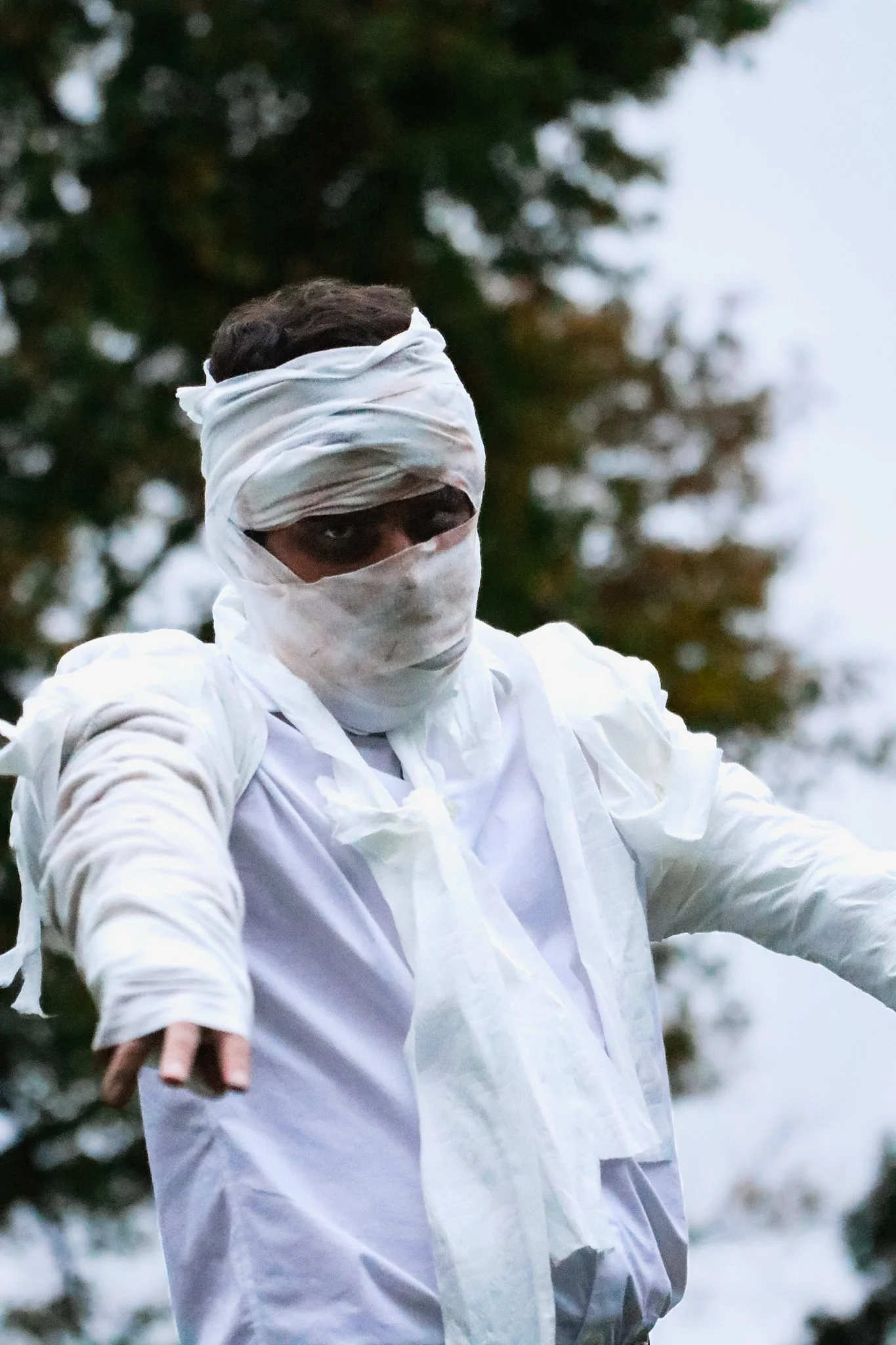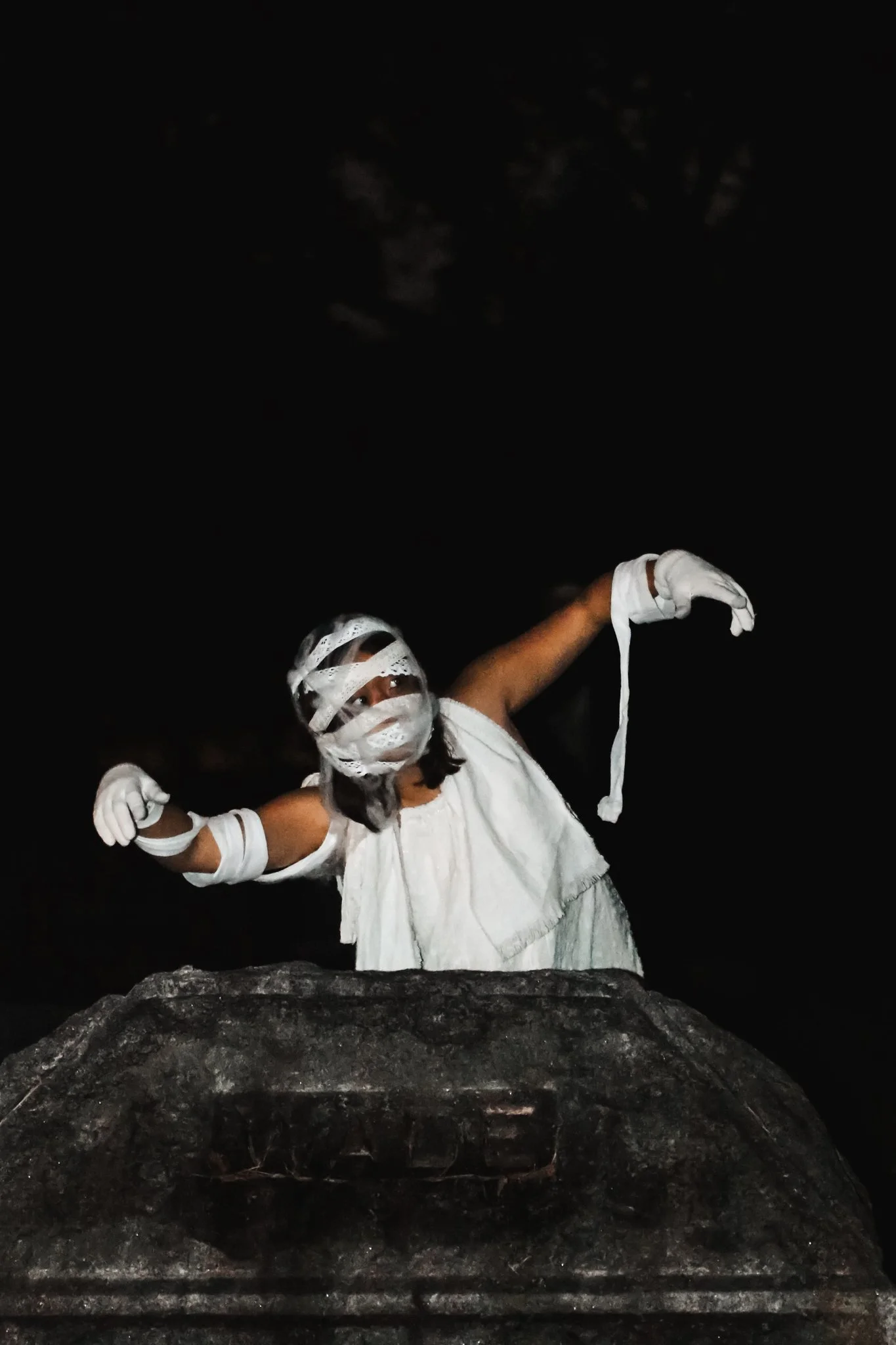Creatures of the Night
Written by: Brooke Benne
Photography by: Jenna Brown
Modeled by: Collen Fuller, Terrell Burse, Aliyah Rivero, Izzy Hill, Sarah Jeon, Andrea Martinez, CJ Parker, & Cole Vest
Makeup by: Emily Heavrin
They thrive in the dark and shrink away from the light. These monsters are either depicted as tortured and sympathetic, or cruel and sadistic. Different stories have different rules about their nature, but they all share the fact that they are unnatural, undead creatures of the night. From the eerie black-and-white beginnings at Universal Studios, which defined classic horror in the 1930s and ’40s by creating cinema’s first shared monster universe, to the modern CGI makeovers of the 2000s, cinema’s most famous monsters have constantly evolved in look and attitude. Vampires became seductive and stylish, mummies shifted from ancient terror to action-adventure icons, Frankenstein’s creature turned from horror to heartbreak, and zombies transformed from voodoo puppets to viral apocalyptic hordes. Each reinvention reflects the fears and fashions of its time, proving that monsters never truly die; they adapt for the next generation.
Vampires
Vampires are among cinema’s oldest and most stylish monsters, rooted in European folklore and popularized by Bram Stoker’s 1897 novel Dracula. The blood sucker’s first major film appearance was in Nosferatu (1922), where Count Orlok appeared as a pale, rat-like creature with long fingers and sharp teeth. The look shifted in Dracula (1931), with Bela Lugosi’s black, sleek hair, cape, tuxedo, and hypnotic charm defining the elegant vampire for decades. The less successful sequel, Dracula’s Daughter (1936), introduced the first major female vampire, sharing the same seductive presence and dark attire. From the 1950s to ’70s, Hammer Films’ Dracula series, starring Christopher Lee, brought the character to vivid color—fangs, bloodshot eyes, dripping blood, and gothic sensuality. The 1980s turned vampires into rebellious antiheroes in The Lost Boys (1987), while the ’90s and early 2000s gave them an action-hero edge in Buffy the Vampire Slayer (1992), Blade (1998), and Underworld (2003). Male and female vampires in this era were powerful and fashion-forward—black leather, bold makeup, and confident, predatory charm. By the late 2000s, Twilight (2008–12), a more angsty and modern teen romance, became synonymous with monsters.
Frankenstein’s monster and The Bride
Commonly advertised as the green man with switches and bolts, it originated in Mary Shelley’s 1818 novel Frankenstein. A standard correction is Frankenstein’s monster, since the creator is the true Frankenstein. Universal released the first prominent feature in 1931’s Frankenstein, where Boris Karloff plays the sympathetic monster cursed by his creator to live in a world that fears him. Karloff’s portrayal defined the look of the creature to this day and is an icon of tragic horror, donning the iconic.
Three years later, Karloff returned in Bride of Frankenstein, where the beast gets his desired mate, Elsa Lanchester’s character, the Bride, who only briefly appears, but the iconic look has remained a costume staple and appeared in many adaptations in films like 1974’s comedy Young Frankenstein. A few adaptations were successful, as opposed to films like 1984’s The Bride and Mary Shelley’s Frankenstein (1994) performing poorly at the box office. More modern adaptations reexamined the creature’s humanity in films like Victor Frankenstein (2015) and Frankenweenie (2012). Both the monster and the Bride are getting their own feature films. Frankenstein releases on Netflix in November 2025, starring heartthrob Jacob Elordi as the somewhat book-accurate depiction of the tortured character. The Bride comes to theaters in March of 2026, starring Irish actress Jessie Buckley as the titular role and Christian Bale as her beloved monster, in a more alternative and darker romantic take on the two characters.
Mummies
The Mummy first wrapped its way into horror with The Mummy (1932), starring Boris Karloff as the undead Imhotep; bandaged, shriveled, and eerily still, revived by ancient magic. Universal’s version emphasized slow, haunting movement and tragic love. Later films, like Hammer’s The Mummy (1959), made him taller, grimier, and more violent. In the 1990s, The Mummy (1999) and its three lesser, poorly received sequels gave the monster a modern adventure twist, featuring a faster, more digital, and humanized approach, mixing horror with action and charm. Imhotep is reimagined as a decayed, sand-covered corpse brought back to life, later regenerating into a smooth, muscular, and regal figure. The Mummy’s look in all three films is balanced ancient power with human charm, blending horror and adventure in a modern cinematic way.
The latest film featuring the character was in 2017, The Mummy, starring Tom Cruise as the new lead in an action-adventure setting, but this time with a seductive Egyptian princess Ahmanet. Sofia Boutella’s Princess Ahmanet has a modern, menacing allure, covered in ancient tattoos and faded wrappings, with glowing eyes. A new, more horror-focused Mummy movie is scheduled for release in April 2026.
Zombies
Zombies first appeared on the big screen in White Zombie (1932) as pale, blank-eyed humans controlled by voodoo. The mood was more ghostly than gruesome. Later, in 1968’s Night of the Living Dead, zombies were redefined as gray-skinned, rotting corpses with tattered clothes and once again dead, vacant stares. By the 1980s, films like Return of the Living Dead (1985) featured zombies that were gorier yet trendy, with more decayed flesh, exposed bones, and a punk-rock edge. In the 2000s, fast-moving, infection-based zombies took over in 28 Days Later (2002) and World War Z (2013), looking blood-smeared, veiny, and enraged rather than dead. Modern zombies range from hyper-realistic decay to stylized survivors, reflecting the fears and aesthetics of each era. Following the Twilight craze, Warm Bodies (2013) was released in theaters, depicting the more human and handsome zombie Nicholas Holt in a Romeo and Juliet-type spin. It offers a blend of gory horror with traces of humanity, showing strength, tragedy, and beauty beneath the rot.




